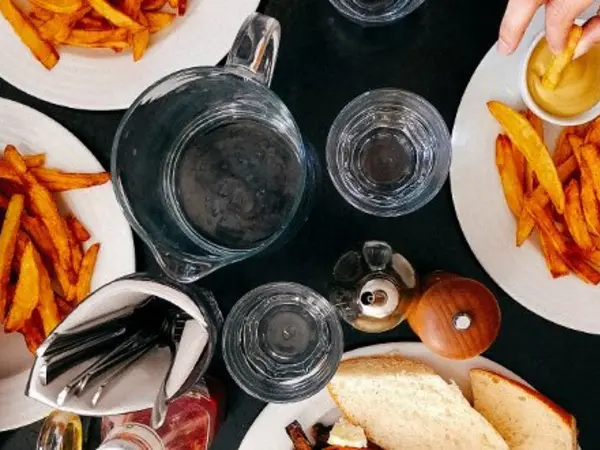
Should I teach my child about calories?
When adults make changes in their eating and exercise habits, kids take notice.
Whether it's to lose weight or improve health markers, your own children, nieces and nephews, grandchildren or children of friends, they are peering over your shoulder and asking questions. They want to know why you are examining a nutrition label or entering your food intake on a calorie-counting app on your phone. What do you do? How you do explain your food choices? Here are some suggestions:
Do…Model healthy behaviors.
Children are always watching and listening, and your actions guide them in developing their own perceptions and behaviors. You can model healthy behaviors by loving and taking care of yourself, using positive language to describe your body, and stocking your home with healthy choices for everyone to enjoy at meals and snacks.
Don't…Invite them to "diet" with you.
Dieting is an unhealthy behavior for everyone. It restricts entire food groups, creates forbidden foods, guilt and encourages using food to manipulate your body size. Dieting behavior in children and teens has been shown to surface as disordered eating as adults, and even lead to an eating disorder. If you find yourself starting to explain to your child that you're "on a diet", then it's time to assess your own lifestyle and relationship with food.
Do…Teach them "stoplight" nutrition.
Stoplight nutrition refers to categorizing foods based on nutritional quality. Green light foods, like fruits, vegetables and whole grains, are every day, nutrient-dense foods. Yellow light foods, like "snack" foods (chips, buttered popcorn, high-fat dairy products, refined carbohydrates) are higher calorie and less nutritious. Red light foods, like desserts, sugar-sweetened beverages, processed meats (bacon, sausage) are high calorie foods with little to no nutritional value. This approach teaches children (and adults) that all foods fit in healthy eating and that there are no foods they can never have. By using this approach, you can steer the conversation away from analyzing the calories, fat, sugar, etc. in a food and ask them instead where that food fits on the "stoplight" spectrum.
Don't…Emphasize the calories.
Listening to hunger and fullness cues, and choosing foods based on the nutritional quality are more important than how many calories that food has. There are only a few rare cases where calories, saturated fat, carbohydrate, etc. are necessary for kids to be aware of. Putting too much emphasis on caloric content of foods can lead to a child restricting certain foods altogether, or choosing not to consume a very nutritious food just because it's also higher in calories (an avocado, for example).
The bottom line is that all foods fit into a healthy lifestyle, regardless of calorie content. Instead of teaching children about calories and dieting, role model healthy living. Eat for physical hunger and choose nourishing foods 80-90% of the time, and eat for pleasure or to indulge in a craving 10-20% of the time. This healthy balance of eating to nourish and eating for pleasure applies to adults and kids alike.